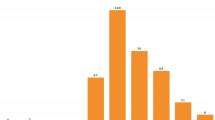Abstract
E-Learning courses are top-rated in recent years. While COVID 19 primarily affects public health, spillover effects can already be observed in education, stemming mainly from extended educational institution closures. This is undoubtedly the critical time for the education sector because, during this period, many universities’ admission exams and competitive examinations are conducted. For them, we should forget about tests, admissions, etc. The need to study student success and forecast their success, along with that is increasing. With the increasing number of it was tested for instructional technology’s popularity, various data mining algorithms perfect for predicting student performance. The right algorithm depends on the algorithm’s nature. A guess has to be made by the faculty. If the number of students, the need to correct data complexity raises data relationship and their processing is an issue for the student to be found at the expense of failure. The decision tree approach to the statistical analysis of academic findings in this paper concerns and the big data implication.
Access this chapter
Tax calculation will be finalised at checkout
Purchases are for personal use only
Similar content being viewed by others
References
Wang S, Gu M (2012, May) Searching for dependencies among concepts in a e-learning system with decision tree. In: 2012 international conference on systems and informatics (ICSAI2012), pp 1012–1016, IEEE
Lin JC, Wu KC (2007, July) Finding a fitting learning path in e-learning for juvenile. In: Seventh IEEE international conference on advanced learning technologies (ICALT 2007), pp 449–453, IEEE
Utomo AY, Santoso HB (2015, April) Development of gamification-enriched pedagogical agent for e-learning system based on community of inquiry. In: Proceedings of the international HCI and UX conference in Indonesia, pp 1–9
Zhou TF, Pan YQ, Huang LR (2017, December) Research on personalized e-learning based on decision tree and RETE algorithm. In: 2017 International conference on computer systems, electronics and control (ICCSEC), pp 1392–1396, IEEE
Duo S, Ying ZC (2012) Personalized e-learning system based on intelligent agent. Phys Procedia 24:1899–1902
Bakhshayeshian Z, Khalili M (2015, November) An suggested method to university courses presentation based on cart algorithm to pun universities. In: 2015 2nd international conference on knowledge-based engineering and innovation (KBEI), pp 1170–1173, IEEE
Kamaludeen ZS, Devi VU Determine the user satisfaction on e-learning using the decision tree algorithm with Kano analysis
Lee S, Park I (2013) Application of decision tree model for the ground subsidence hazard mapping near abandoned underground coal mines. J Environ Manage 127:166–176
Xiang Z, Zhang L (2012, October) Research on an optimized C4. 5 algorithms based on rough set theory. In: 2012 International conference on management of e-commerce and e-government, pp 272–274, IEEE
Lin CF, Yeh YC, Hung YH, Chang RI (2013) Data mining for providing a personalized learning path in creativity: an application of decision trees. Comput Educ 68:199–210
Lim TS, Loh WY, Shih YS (1999) A comparison of prediction accuracy, complexity, and training time of thirty-three old and new classification algorithms. Department of Statistics, University of Wisconsin
Das S, Dahiya S, Bharadwaj A (2014, March) An online software for decision tree classification and visualization using c4. 5 algorithm (ODTC). In: 2014 international conference on computing for sustainable global development (INDIACom, pp 962–965, IEEE
Mazid MM, Ali S, Tickle KS (2010, February) Improved C4. 5 algorithm for rule based classification. In: Proceedings of the 9th WSEAS international conference on artificial intelligence, knowledge engineering and data bases. World Scientific and Engineering Academy and Society (WSEAS), pp 296–301
Zhen Y, Yong Q, Dan H, Jing L (2011, August) The application of shot classification based on C4. 5 decision tree in video retrieval. In: 2011 6th IEEE joint international information technology and artificial intelligence conference, vol 1, pp 426–429, IEEE
Dongming L, Yan L, Chao Y, Chaoran L, Huan L, Lijuan Z (2016, October) The application of decision tree C4. 5 algorithm to soil quality grade forecasting model. In: 2016 First IEEE international conference on computer communication and the internet (ICCCI), pp 552–555, IEEE
Nie B, Luo J, Du J, Peng L, Wang Z, Chen A (2017, November) Improved Yahaya BZ, Muhammad LJ, Abdulganiyyu N, Ishaq FS, Atomsa Y (2018) An improved C4. 5 algorithm using L’Hospital rule for large dataset. Indian J Sci Technol 11(47):1–8
Dong AT, Wang JH (2004, August) A comparison between decision trees and extension matrixes. In: Proceedings of 2004 international conference on machine learning and cybernetics (IEEE Cat. No. 04EX826), vol 6, pp 3798–3801, IEEE
Author information
Authors and Affiliations
Editor information
Editors and Affiliations
Rights and permissions
Copyright information
© 2021 The Author(s), under exclusive license to Springer Nature Singapore Pte Ltd.
About this paper
Cite this paper
Varun, T., Suseendran, G. (2021). Improved Decision Tree Method in E-Learning System for Predictive Student Performance System During COVID 19. In: Peng, SL., Hsieh, SY., Gopalakrishnan, S., Duraisamy, B. (eds) Intelligent Computing and Innovation on Data Science. Lecture Notes in Networks and Systems, vol 248. Springer, Singapore. https://doi.org/10.1007/978-981-16-3153-5_55
Download citation
DOI: https://doi.org/10.1007/978-981-16-3153-5_55
Published:
Publisher Name: Springer, Singapore
Print ISBN: 978-981-16-3152-8
Online ISBN: 978-981-16-3153-5
eBook Packages: Intelligent Technologies and RoboticsIntelligent Technologies and Robotics (R0)




